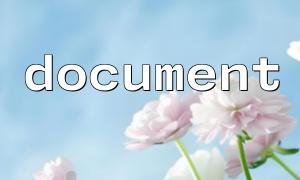The ThinkPHP framework offers powerful image processing capabilities, including image rotation and cropping. These features enable developers to easily rotate, crop, and perform other image manipulations to meet various requirements.
The process of implementing image rotation can be broken down into a few steps. First, you need to upload the image to the server, and then use ThinkPHP's image processing class to perform the rotation operation.
First, the image to be rotated needs to be uploaded to the server. In ThinkPHP, the file upload method is used to receive and store the image. Below is an example of the code:
use think\Request;
public function upload() {
$file = Request::instance()->file('image');
$info = $file->move(ROOT_PATH . 'public' + DS + 'uploads');
if ($info) {
// File uploaded successfully
} else {
// File upload failed
}
}In the code above, `Request::instance()->file('image')` retrieves the uploaded image file, and the `move()` method stores it in the specified directory.
Next, use ThinkPHP's image handling class to rotate the image. The code example is as follows:
use think\Image;
public function rotate($filename) {
$rotateImg = Image::open($filename);
$rotateImg->rotate(90); // Rotate 90 degrees clockwise
$rotateImg->save($filename);
}In this code, `Image::open($filename)` is used to open the image, and `$rotateImg->rotate(90)` rotates the image by 90 degrees clockwise. Finally, the rotated image is saved using `$rotateImg->save($filename)`.
In addition to image rotation, ThinkPHP also provides an image cropping feature. Here is an example of the code:
use think\Image;
public function crop($filename) {
$cropImg = Image::open($filename);
$cropImg->crop(200, 200); // Crop to a 200x200 size
$cropImg->save($filename);
}In this code, `Image::open($filename)` opens the image, `$cropImg->crop(200, 200)` crops the image to a 200x200 size, and the cropped image is saved using `$cropImg->save($filename)`.
The image rotation and cropping features are applicable in various scenarios. Below are some common examples:
When developing a custom image editor, image rotation and cropping are essential features. Users can rotate and crop images to achieve their desired effect.
When users upload avatars, they often need to crop the image to fit platform requirements. The rotation feature also allows users to adjust the orientation of the avatar.
In image showcase platforms, images may have incorrect angles when uploaded. The rotation feature can be used to correct these angles, and the cropping feature helps to display specific details of the image.
Through the image rotation and cropping features provided by ThinkPHP, developers can easily manipulate images to meet personalized requirements. This article covered the implementation process and common use cases of these features, and we hope it is helpful to you.









